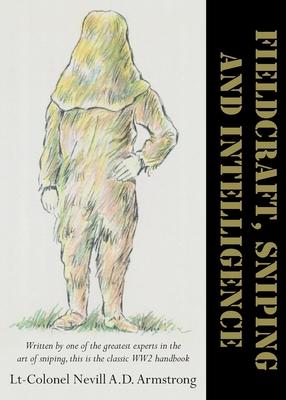This is the classic WW2 sniping handbook. The author had much experience in sniping on the western front in the First World War, and he wrote his experiences down for the use of troops and the Home Guard at the beginning of the Second World War. This important manual covers all aspects of sniping and is a first class introduction to the subject both then and now. At the start of the Second World War, Armstrong became an instructor in the Sniping Wing of the Small Arms Schools at Hythe and Bisley. In 1942 he became Commandant at the Royal Marine Sniping School.
Written by one of the greatest experts in the art of sniping, Lt-Colonel Nevill Armstrong, a Canadian Officer who served with distinction on the Western Front during the First World War, this is the classic WW2 sniping handbook. The author had much experience in sniping during the war and he wrote his experiences down for the use of troops and the Home Guard at the beginning of the Second World War. This important manual covers all aspects of sniping and is a first-class introduction to the subject both then and now. At the start of the Second World War, Armstrong became an instructor in the Sniping Wing of the Small Arms Schools at Hythe and Bisley. In 1942 he became Commandant at the Royal Marine Sniping School.
Armstrong served in France between 1915 and 1917, being mentioned in despatches four times. He was Chief Instructor at the 2nd Army School of Scouting, Observation and Sniping from 1915-16, and Commandant of the Canadian Corps School of Sniping from 1917-18. The book covers all aspects of sniping, fieldcraft and intelligence. It was largely based on Armstrong's experiences in the trenches, and includes detailed instructions for snipers operating in trench warfare, along with descriptions of hides, loopholes, sniper suits and all the other equipment and techniques in use at the time. It is well illustrated with many line drawings and diagrams, some of which are in colour. The book also looks at the tactical use of fieldcraft, camouflage and battlefield intelligence work.
The Allies' development of systematic sniping during WW1 was initially unpopular, even among their own troops, but was an inevitable response to highly effective German sniping. In the first two years of the war German sniping was accounting for around 100 fatalities a day. By the end of the war, Allied snipers were more than matching their German opponents, thanks largely to their Canadian instructors. In 'Fieldcraft, Sniping and Intelligence', Armstrong defines the sniper as: "An expert rifleman 'out to kill' who is highly trained in observation and the use of ground; equally valuable in trench and open warfare. He should be able to pick out targets exposed for only short periods and kill with a single shot from concealed positions".
